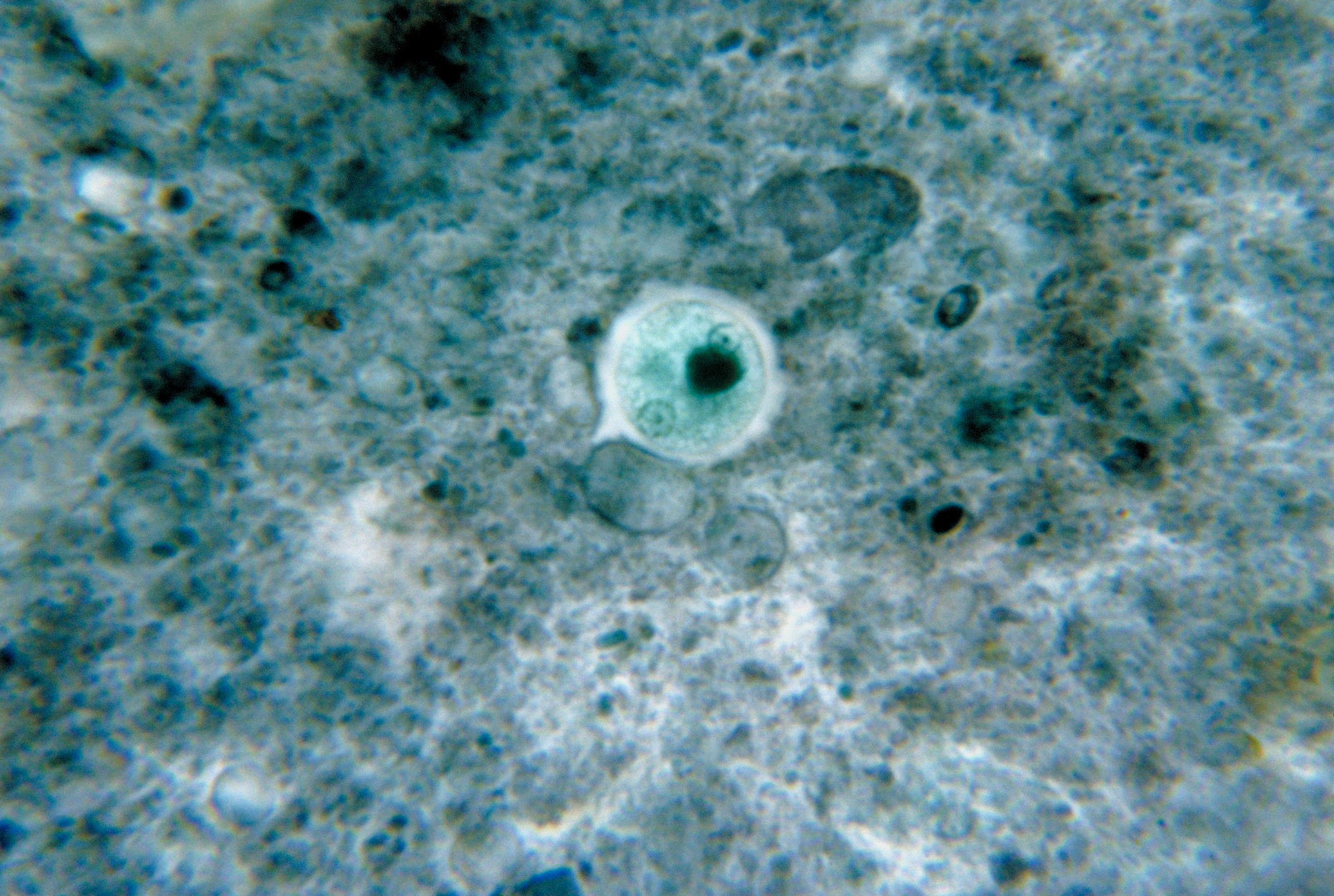- Archamoebae
taxobox
name = Archamoebae

image_width = 240px
image_caption = "Entamoeba histolytica" cyst
domain =Eukaryota
regnum =Amoebozoa
phylum = Archamoebae
phylum_authority = Cavalier-Smith, 1983
subdivision_ranks = Genera
subdivision = "Endolimax "
"Entamoeba "
"Mastigamoeba "
"Mastigella "
"Mastigina "
"Pelomyxa "
"Phreatamoeba "The Archamoebae are a group ofAmoebozoa distinguished by the absence of mitochondria. They include two genera, "Entamoeba " and "Endolimax ", that are internal parasites or commensals of animals. A few species are human pathogens, causing diseases such as amoebicdysentery . The other genera of archamoebae live in freshwater habitats, and are unusual among amoebae in possessing flagella. Most have a single nucleus and flagellum, but the giant amoeba "Pelomyxa " has many of each.Early molecular trees based on
rRNA placed the parasitic or commensal genera (entamoebids) and the flagellate genera (pelobionts) as separate groups that diverged from othereukaryote s very early on, suggesting that the absence of mitochondria was a primitive condition. The absence of dictyosomes in "Pelomyxa" was also considered primitive, which would separate it from "Entamoeba", which has dictyosomes.The name Archamoebae, from Greek αρχη first, refers to this presumed antiquity. However, studies based on other genes have shown that this placement is an artifact of
long-branch attraction . Instead, the Archamoebae are part of the Amoebozoa that have lost their mitochondria, and are particularly close relatives of theslime mould s. It also appears the pelobionts and entamoebids are not separate groups, i.e. "Entamoeba" and "Endolimax" developed separately from free-living ancestors.
Wikimedia Foundation. 2010.
